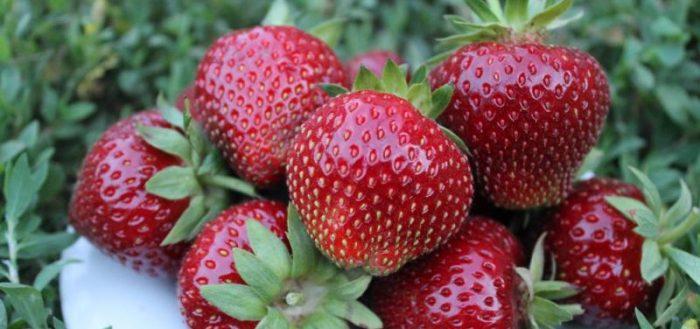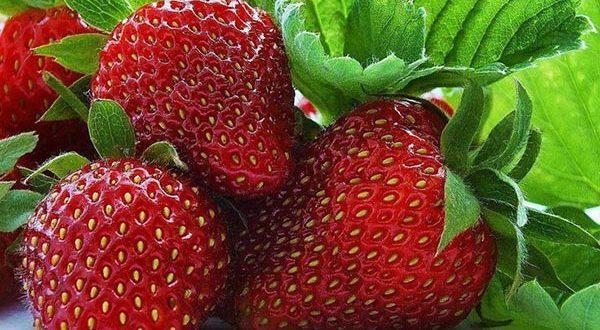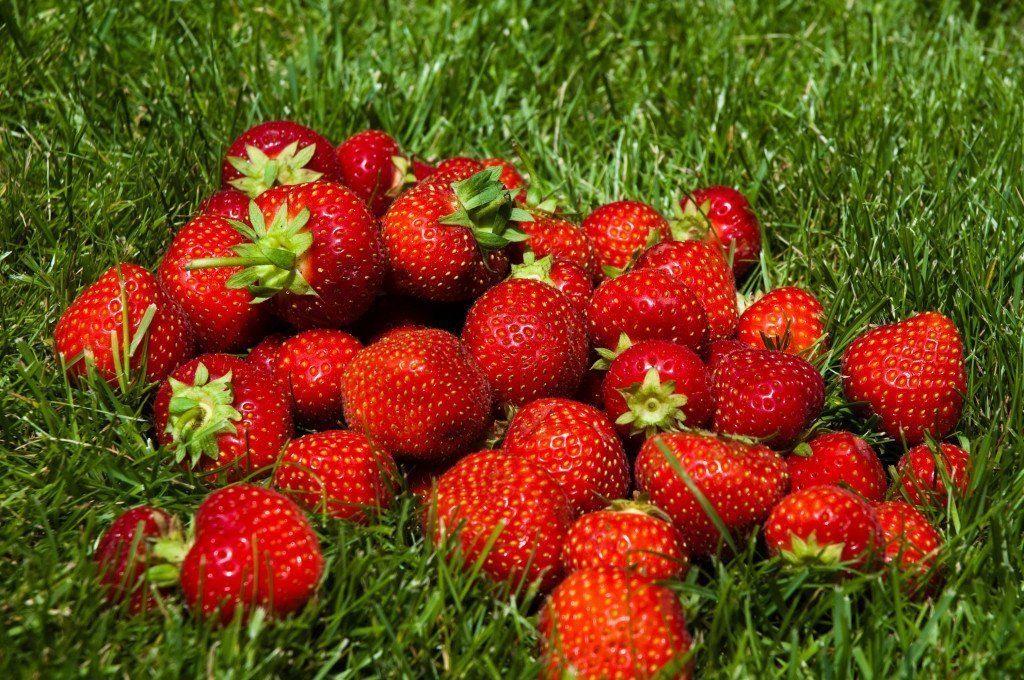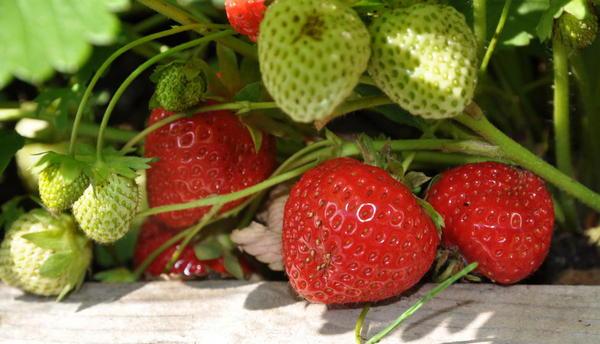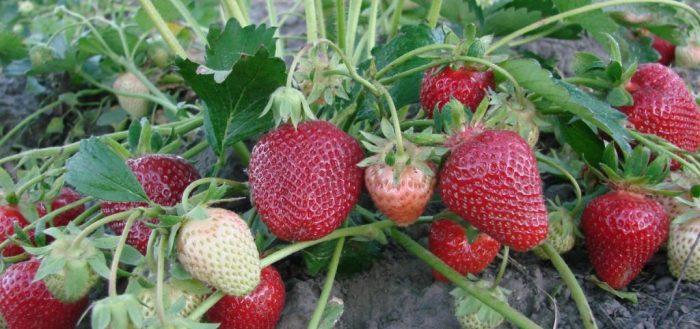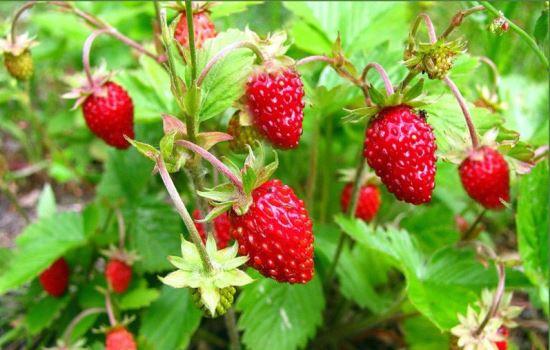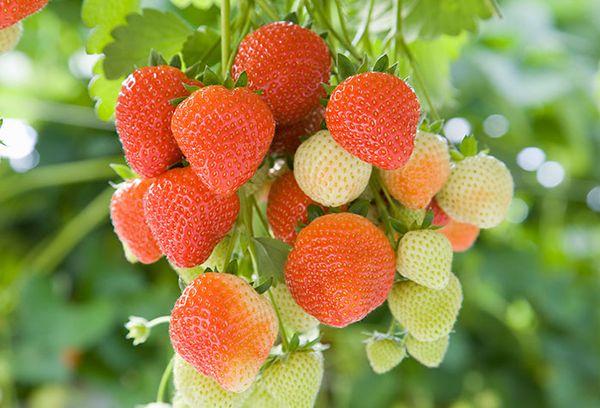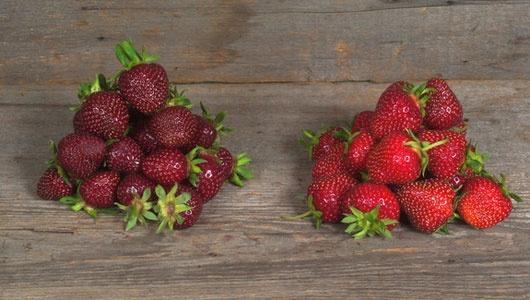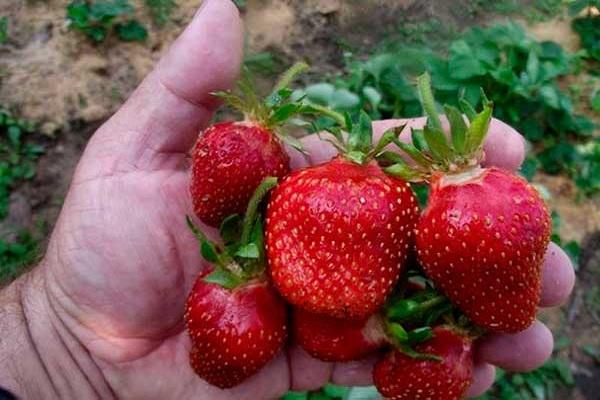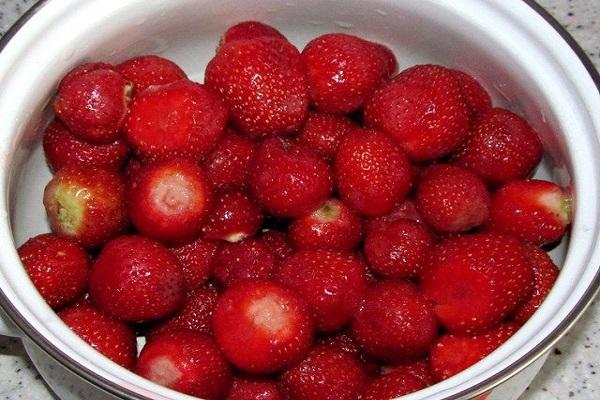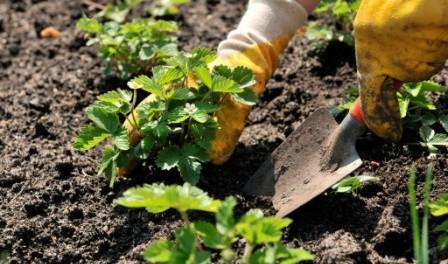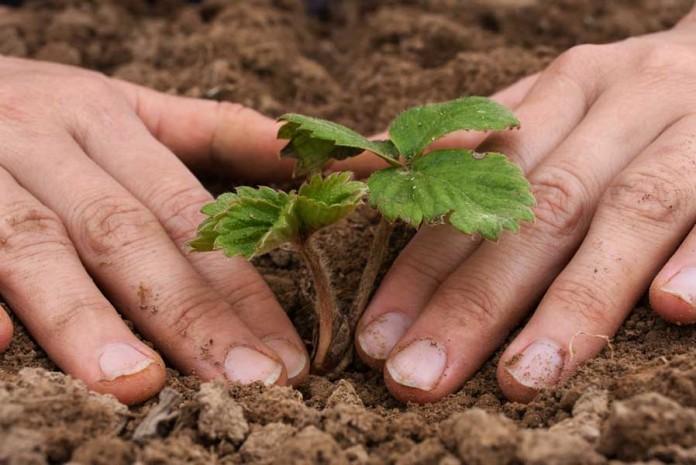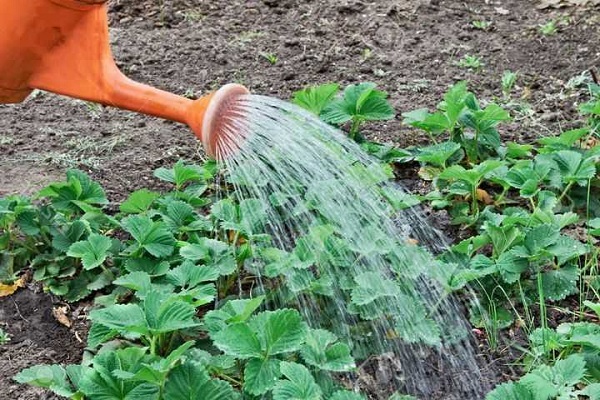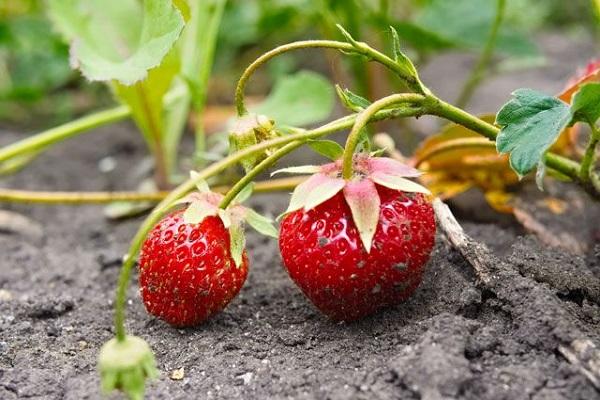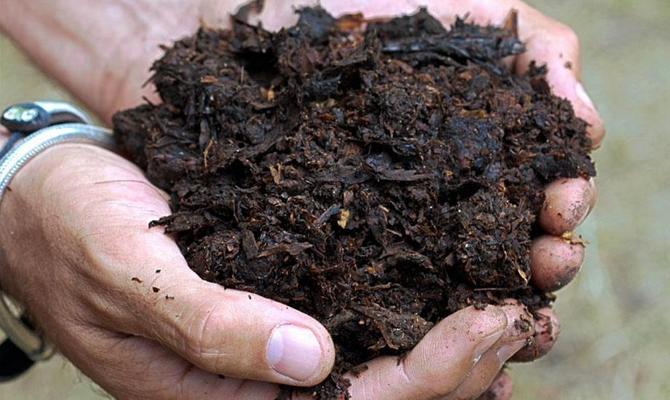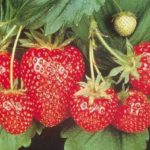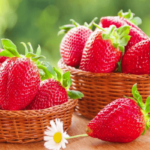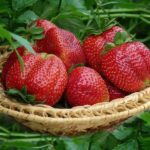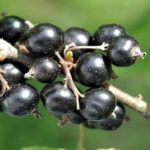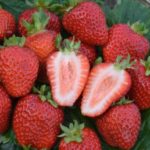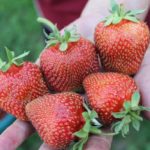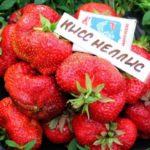Many summer residents in the Moscow region receive a good harvest of strawberries, despite the fact that the region can hardly be called ideally suited for this popular crop. The correct choice of variety and care helps with this. Let's consider which varieties of strawberries are considered the best for the Moscow region, as well as some features of planting and growing.
- Specifics of growing strawberries in the Moscow region
- The best varieties for this region
- Early
- Sudarushka
- Elsanta
- Darselect
- Olvia
- Mid-season strawberry
- Arosa
- Asia
- Marmalade
- Late varieties
- Monterey
- Mara de Bois
- Malvina
- Remontant varieties
- Portola
- Monterey
- San Andreas
- Choosing strawberries according to different criteria
- Productive
- Resistant to diseases and pests
- The sweetest
- New varieties
- Planting and caring for strawberries in the Moscow region
- When to plant?
- Landing technology
- Watering and fertilizers
- Preparing for winter
- Treatment against diseases and pests
Specifics of growing strawberries in the Moscow region
Let us highlight the main conditions that help to obtain a bountiful harvest of delicious berries:
- Selecting a variety adapted to the main weather characteristics of the Moscow region.
- Compliance with the recommended rules of agricultural technology - planting, watering, fertilizing, pruning.
- Creation of embankment ridges with high groundwater.
- Selecting sunny areas protected from drafts.
- Mulching and covering strawberry plantations for the winter.
- Preventive treatment against common diseases and pests.
Compliance with these rules helps in growing and obtaining tasty fruits.
The best varieties for this region
Many varieties have been created for cultivation in the Moscow region, differing in ripening time, berry size and other properties. The main difficulties are to understand the variety of hybrids and find a reliable seedling producer.
Early
Early fruiting varieties are among the leaders among summer residents. Usually they are not large-fruited and high in sugar, but they make it possible to open the berry season at the earliest possible date.
Sudarushka
The berries are slightly elongated with a pointed tip. Dense pink pulp without signs of looseness. Sweet and sour taste (sugar 6%). Yields up to a kilogram of berries per bush. Frost-resistant, tolerates excess moisture. Easily survives transportation.
Elsanta
Dutch selection. Berries up to 13 grams, red, shiny. When grown in the Moscow region, shelter for the winter is required. It easily survives lack of moisture, but the yield drops somewhat.
Darselect
Ripens in mid-June. The berries are quite large, sometimes up to 30 grams.Withstands frosts down to -16 °, requires shelter. The shape of the berries can change during the season from conical to round. The flesh is red, with orange hues. It does not deteriorate during long-term transportation.
Olvia
Belongs to the super-early variety and begins to bear fruit in May. The berries grow up to 30-40 grams and are slightly sour. It ripens in short daylight hours and lack of heat. The whiskers and young rosettes have a reddish tint.
Mid-season strawberry
Mid-ripening varieties require longer light exposure and ripen 1-2 weeks later than early ones.
Arosa
The berries of this variety are consistently large (25-30 grams), the first ones often weigh up to 45 grams. Delicious aromatic fruits with a pronounced strawberry smell. The pulp is juicy, medium density. Has a high tasting score - 4.7. Tolerates transportation well.
Asia
The variety was obtained in Italy. The berries have an elongated conical shape and are easily separated from the stalk. The fruits are distinctly red in color and have a strong strawberry scent. On average, 1-1.2 kilograms of berries are harvested from a bush.
Marmalade
Marmalade berries are bright red in color, round in shape, and large fruits often have a scallop at the bottom. Weight – 20-30 grams, often the berries grow up to 40 grams. The variety tolerates lack of watering well, the fruits only become less juicy.
Late varieties
Late-ripening hybrids significantly extend the strawberry harvesting period, which is why they are loved by summer residents.
Monterey
The average weight of berries is 25-35 grams, the first ones are much larger. The fruits are dark red with a cherry tint. The variety is winter-hardy and resistant to lack of moisture.
Mara de Bois
It belongs to the remontant species, bears fruit until autumn, almost until frost, and produces fruits of excellent quality. The first berries are picked at the beginning of summer, autumn specimens are the largest.The berries are light red in color, with a distinct strawberry scent.
Malvina
Berries of excellent taste, red, high in sugar. The variety is distinguished by its high yield on young bushes, reaching 2 kilograms. Gradually the yield decreases.
Remontant varieties
Repeatedly fruiting varieties grow in all dachas, they take root well in the Moscow region, and delight us with two periods of berry picking. The beardless species are distinguished by good yield and taste.
Portola
It gives a larger harvest in the second period at the end of summer. Collection - up to 1.5 kilograms per bush. The berries are large (up to 35 grams), juicy, with a pronounced smell. Portola is loved for its lack of crunch when eaten. First fruits - mid to late June.
Monterey
The variety has powerful bushes that ensure long fruiting. The berries will ripen in several waves. The stalk comes off dry. The taste of the fruit depends little on excess or lack of moisture.
San Andreas
The first fruits ripen in May, then fruiting repeats at the end of summer. It produces few tendrils, so special rooting of rosettes is required to rejuvenate strawberries. The pulp is orange, the fruits are up to 30 grams.
Choosing strawberries according to different criteria
The ripening period of berries is not the only significant criterion when choosing a variety. Experienced gardeners pay attention to a number of other signs that help grow garden strawberries in the Moscow region.
Productive
Strawberries are made into fragrant jam and frozen for the winter. To make preparations or grow berries for sale, you need to choose productive varieties. In the Moscow region, the following types of strawberries are recommended for cultivation, giving a high yield:
- Lord - berries up to 100 grams, bears fruit for up to 10 years;
- Festival – requires updating every 2 years;
- Queen Elizabeth - frost-resistant, early ripening;
- Aromas - when fertilized and watered, it produces 2 kilograms of berries per bush;
- Chamora Turusi - up to 3 kilograms, demanding conditions;
- Albion - up to 2 kilograms of berries per plant.
Note that the yield of most varieties increases with timely fertilizing and good weather conditions.
Resistant to diseases and pests
Resistance to diseases and insect pests is demonstrated by the following varieties grown in the Moscow region:
- Clery;
- Sudarushka;
- Darselect;
- Vima Zanta;
- Queen Elizabeth;
- Zenga Zengana.
These disease-resistant varieties also require preventive treatment before planting, in winter and during the growing season.
The sweetest
The sweetest varieties are usually of European and American selection. This quality is preserved in strawberries in the Moscow region. The following varieties are famous for their sweet taste:
- Shelf;
- Black Swan;
- Maryshka;
- Kimberly;
- El Dorado;
- Carmen;
- Crown.
Many people believe that slight sourness does not harm strawberries, but only emphasizes the aroma.
New varieties
Among the new varieties, the following have gained popularity among summer residents of the Moscow region:
- Christina – berries up to 40 grams:
- Honey – easily transported, maintaining taste;
- Kimberly - exquisite caramel taste of fruits;
- Zenga Zengana of German selection;
- Clery is an achievement of Italian breeders, tasty and juicy;
- Elsanta - easily reproduces in the Moscow region.
New varieties do not displace old favorites from summer cottages that have proven themselves well over many years.
Advice: for growing, it is better to buy seedlings from nurseries in the Moscow region; they are adapted to weather conditions, take root better, and are less susceptible to disease.
Planting and caring for strawberries in the Moscow region
For planting, choose bright, well-lit areas, protected from drafts.Lowlands and slopes are not used, since water and cold air fall on low beds, and on the slopes the wind blows snow away.
When to plant?
It is best to plant young seedlings in the fall; the most suitable planting dates are late August, early September. Young rosettes must develop a root system that will allow them to survive the winter and not freeze during early frosts.
The second convenient time is the spring months. You won’t have to count on a harvest this year, but strawberries will be able to strengthen themselves and grow a resilient bush. Seedlings should be replanted when the soil warms up and the risk of frost subsides, in the Moscow region - April-May.
Landing technology
In the Moscow region, strawberries are often planted in raised beds - in one or two rows. The beds are prepared in the spring by removing weeds and applying fertilizers. Open ground planting scheme:
- the distance between bushes is 25-40 centimeters, depending on the size of the bush;
- row spacing – 45-60 centimeters.
Own seedlings are prepared in the summer, during the growth of mustaches and rosettes, choosing for propagation those closest to the mother bush. Sockets are pinned to the ground for quick rooting.
In the Moscow region, it is recommended to plant on a dark film, which acts as mulch, retards the growth of weeds and warms the roots during cold weather. Many summer residents practice planting in vertical beds, making them themselves or purchasing ready-made trukars.
Help: when planting, it is important not to deepen or raise the growing point above the ground and not to bend the roots.
Watering and fertilizers
Strawberries need care throughout the gardening season. Maintaining soil moisture is especially important. With a lack of moisture, there are fewer fruits and their taste decreases.
It is recommended to water 1-2 times a week as the soil dries out. Watering - in the morning and or evening, with warm water. If the beds are not mulched, loosening and weed removal are necessary. They loosen to a depth of 10 centimeters, providing air access to the roots and removing the earthen crust.
For full growth in the Moscow region, 3-4 feedings per season are required. Fertilizer application time:
- nitrogen (manure) - in the spring, after the snow melts;
- complex (potassium, phosphorus) - during active flowering, preparations NV-101 and Zircon help accelerate growth;
- during fruiting - organic, after picking berries - urea, herbal infusions;
- nitrophoska, organics - in the fall, before winter.
It is convenient to use special fertilizers for strawberries.
Preparing for winter
When winter approaches, the last pruning of the bushes is carried out - the green part is not cut out, only damaged leaves are removed. In winter, it is useful to water the bushes with Bordeaux mixture to protect them from diseases and pests.
The final fertilizing is carried out with organic fertilizers - manure, bird droppings.
It is recommended to mulch strawberry beds to protect the growing point from freezing. If snow does not fall for a long time, the bushes are covered with leaves, hay, and spruce branches. In spring, this cover should be removed in time to prevent fungal infections from developing.
Treatment against diseases and pests
During the summer period, preventive treatments are carried out to prevent the development of diseases and the proliferation of pests. The bushes are regularly inspected to spot problems in time. Damaged leaves and entire bushes are removed immediately.
For prevention, fungicides are used, from the beginning of foliage growth and every 10 days until flowering - Bordeaux mixture, Ridomil. It is useful to treat the soil with these products even before planting the strawberries.Fungal infections are also treated with iron sulfate, Hom, Fundazol, and Maxim.
Among the pests most often affecting strawberries are aphids, nematodes, and strawberry mites. When cobwebs appear on the leaves and other signs of pests, all bushes should be immediately treated with insecticides. The best drugs are Inta-Vir, Karbofos, Actofit, Fitoverm.
Microfertilizers and growth stimulants help strawberries to resist diseases and pests, and if damaged, quickly restore development and fruiting. Their use significantly increases the protective powers of strawberries.
Many varieties of strawberries have been created for the Moscow region, tasty and aromatic, which can withstand climate conditions and produce a stable harvest. Among this abundance of varieties, you just need to choose the best ones correctly in order to provide yourself with tasty fruits in the summer and preparations for the winter.

